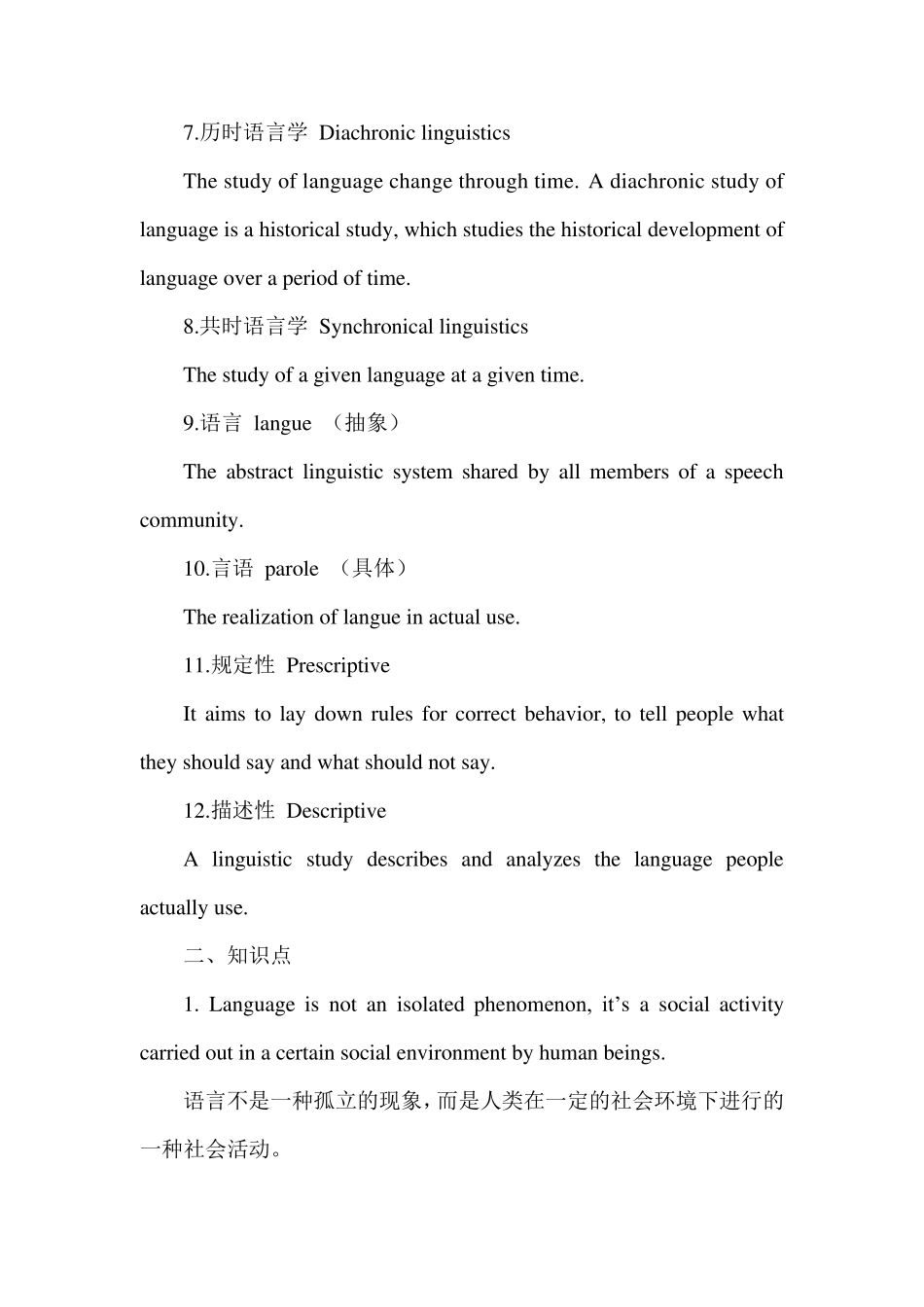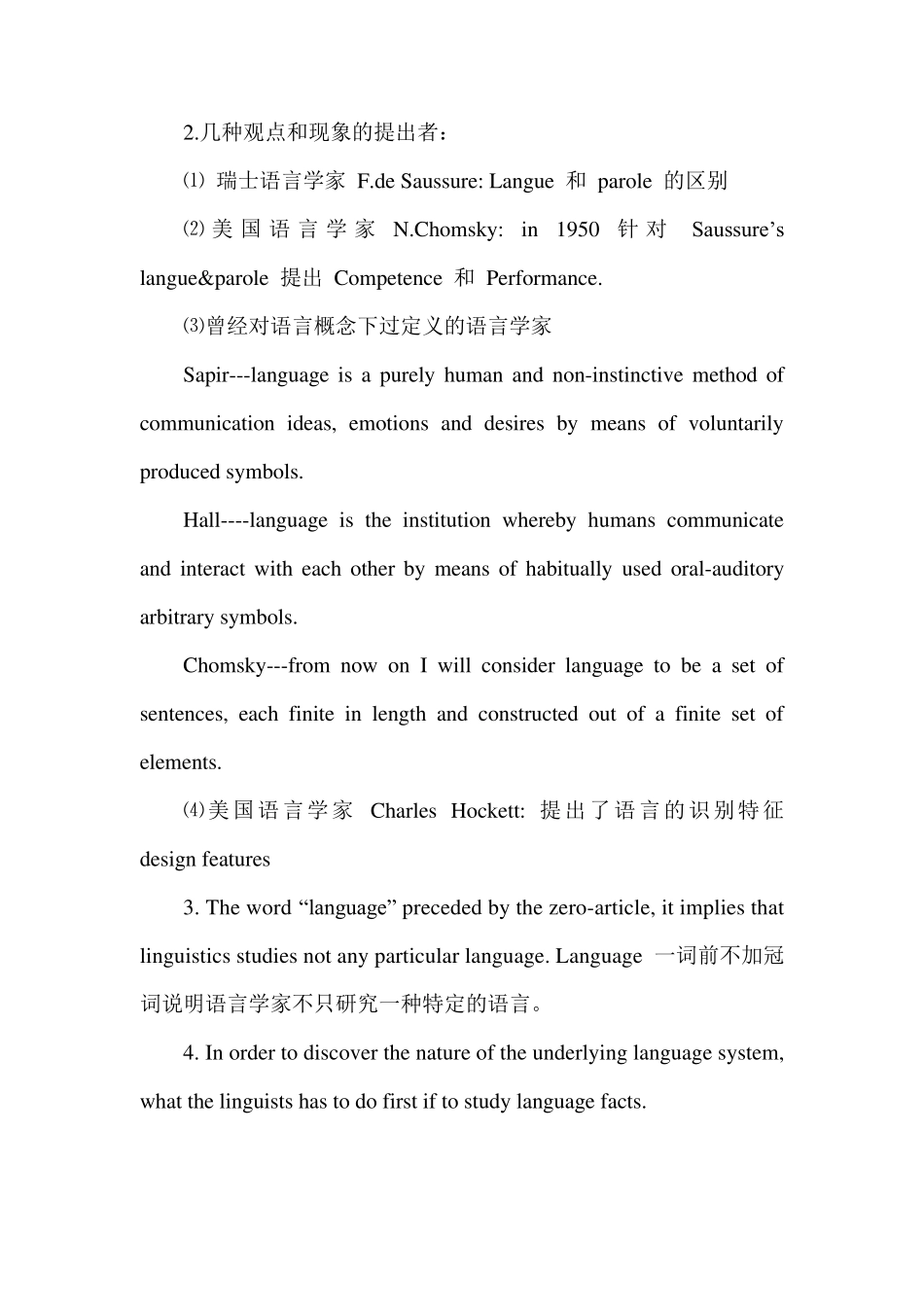Chapter one Introduction 一、定义 1.语言学 Linguistics Linguistics is generally defined as the scientific study of language. 2.普通语言学 General Linguistics The study of language as a whole is often called General linguistics. 3.语言 language Language is a system of arbitrary vocal symbols used for human communication. 语言是人类用来交际的任意性的有声符号体系。 4.识别特征 Design Features It refers to the defining properties of human language that distinguish it from any animal system of communication. 语言识别特征是指人类语言区别与其他任何动物的交际体系的限定性特征。 Arbitrariness 任意性 Productivity 多产性 (创造性) Duality 双重性 Displacement 移位性 Cultural transmission 文化传递 5.语言能力 Competence (抽象) Competence is the ideal user’s knowledge of the rules of his language. 6.语言运用 performance (具体) Performance is the actual realization of this knowledge in linguistic communication. 语言运用是所掌握的规则在语言交际中的具体体现。 7.历时语言学 Diachronic linguistics The study of language change through time. A diachronic study of language is a historical study, which studies the historical development of language over a period of time. 8.共时语言学 Synchronical linguistics The study of a given language at a given time. 9.语言 langue (抽象) The abstract linguistic system shared by all members of a speech community. 10.言语 parole (具体) The realization of langue in actual use. 11.规定性 Prescriptive It aims to lay down rules for correct behavior, to tell people what they should say and what should not say. 12.描述性 Descriptive A linguistic study describes and analyzes the language people actually use. 二、知识点 1. Language is not an isolated phenomenon, it’s a social activity carried out in a certain social enviro...


